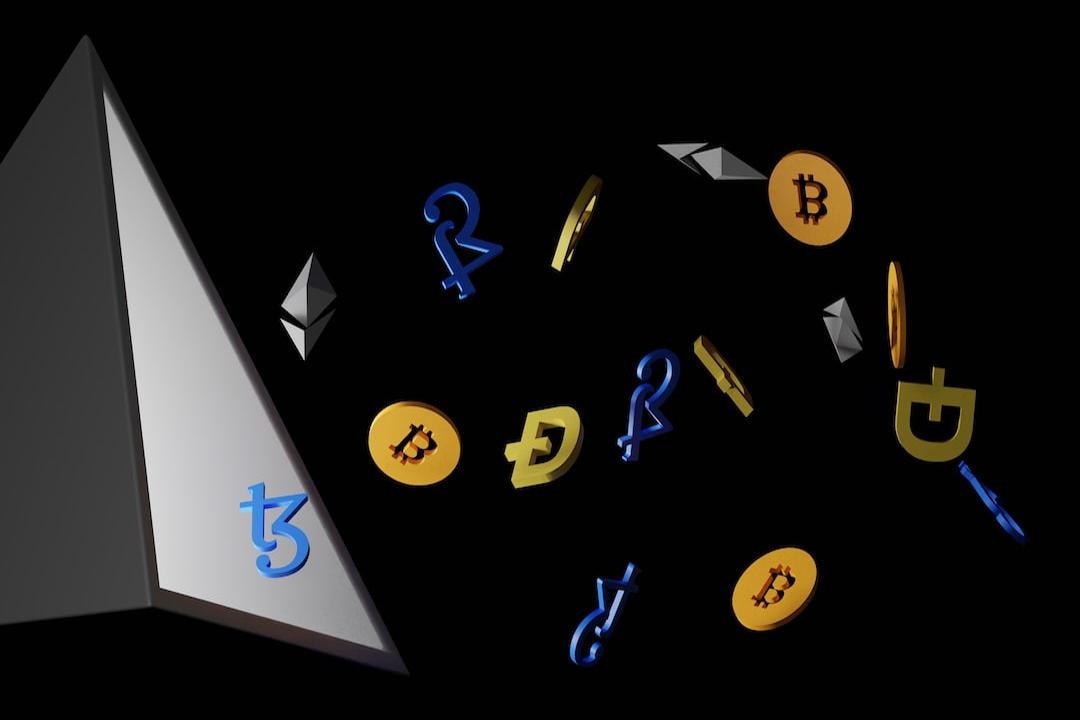Introduction:
Stargate Finance (STG) is a decentralized finance (DeFi) platform that aims to serve as a bridge between blockchain and decentralized applications (DApps).

Stargate Finance is built on the LayerZero protocol, which allows different blockchains to interact with each other. Through Stargate, you can exchange USDT on Ethereum for USDC on Arbitrum in a single transaction, and it supports many other chains.
The STG token is the native token of Stargate Finance, used for various functionalities and reward mechanisms on the platform. Users can earn STG tokens by providing liquidity and participating in platform governance. Similarly, users can participate in platform governance by staking STG tokens, voting on important matters such as platform fees and target asset balance.
Core Mechanisms:
2.1 LayerZero Technology
LayerZero technology is the foundation of Stargate Finance, providing a secure and efficient solution for cross-chain communication and asset transfer. Here is a detailed description of LayerZero technology:
1. Concept
LayerZero is a cross-chain interoperability protocol designed to enable direct communication between different blockchains in a decentralized manner. It provides the infrastructure for cross-chain asset transfer, addressing many issues in traditional cross-chain bridging solutions.

2. Working Principles
LayerZero technology achieves cross-chain communication and asset transfer through the following mechanisms:
Cross-chain message passing: LayerZero allows direct message passing between different blockchains without intermediaries. This is achieved through lightweight relayers and oracles.
Lightweight relayers and oracles: Relayers are responsible for transmitting transaction data, while oracles verify and confirm the validity of the data. The separation of relayers and oracles ensures high security and decentralization.
User Application (UA) protocols: These are smart contracts running on the source and target chains, responsible for handling the logic of cross-chain transactions. UAs ensure the accurate execution of transactions and handle the transfer of user assets.
3. Security and Decentralization
LayerZero technology ensures the security of cross-chain communication through multi-layered security mechanisms and a decentralized architecture:
Minimal trust: LayerZero is designed with the principle of minimal trust, reducing users’ reliance on intermediaries. Relayers and oracles are operated by independent entities, ensuring the independence of data transmission and verification.
Distributed validation: Oracles are responsible for validating the data transmitted by relayers, ensuring the authenticity and accuracy of transaction data. The distributed oracle network reduces the risk of single point failures.
Anti-fraud mechanisms: LayerZero adopts anti-fraud mechanisms to ensure the security of cross-chain transactions. If malicious behavior is detected, it can be promptly corrected to protect user assets.
4. Cross-chain Asset Transfer
LayerZero technology supports the cross-chain transfer of native assets, providing an efficient and cost-effective solution:
Single transaction cross-chain transfer: Users can transfer assets between different blockchains in a single transaction, without the need for complex token wrapping processes.
Instant transaction confirmation: Through LayerZero, cross-chain transactions result in immediate asset arrival on the target chain after confirmation on the source chain, ensuring instant and reliable transactions.
5. Integration with Stargate Finance
LayerZero technology is deeply integrated with Stargate Finance, providing the infrastructure for its cross-chain liquidity pools and asset transfers:
Unified liquidity pool: LayerZero technology supports Stargate Finance’s unified liquidity pool, enabling liquidity sharing between different blockchains.
Support for Delta algorithm: LayerZero technology provides cross-chain communication support for the Delta algorithm, ensuring efficient management and rebalancing of liquidity pools.
6. Advantages
LayerZero technology offers several advantages over traditional cross-chain bridging solutions:
Efficient communication: LayerZero achieves efficient cross-chain communication through lightweight relayers and oracles, reducing transaction latency and costs.
Decentralization: LayerZero’s decentralized architecture ensures the security and reliability of the system, avoiding single point failures and centralization risks.
Flexibility: LayerZero supports multiple blockchains and asset types, providing wide compatibility and applicability.
2.2 Delta Algorithm
The Delta algorithm is a core innovation of Stargate Finance for efficient and secure cross-chain asset transfer. Here is a detailed description of the Delta algorithm:

1. Foundation of the Delta Algorithm
The Delta algorithm is the core technology used by Stargate Finance to manage and optimize cross-chain liquidity pools. It programmatically controls the liquidity pool to achieve instant finality of cross-chain asset transfers and ensure the stability of the liquidity pool.
2. Instant Finality
The Delta algorithm ensures that the assets arrive on the target chain with a guarantee after the transaction is confirmed on the source chain. This means that users will not experience transaction failures due to insufficient liquidity or token incompatibility. The specific mechanisms include:
Source chain transaction confirmation: When a user submits and confirms a transaction on the source chain, the Delta algorithm immediately locks the corresponding assets on the target chain.
Transfer of target chain assets: After the transaction is confirmed on the source chain, the assets on the target chain are immediately transferred to the user’s account, guaranteeing the finality of the transaction.
3. Unified Liquidity Pools and Soft Partitions
Stargate Finance achieves cross-chain asset transfer through unified liquidity pools, and the Delta algorithm intelligently manages these pools:
Unified liquidity pool: A unified liquidity pool refers to the consolidation of liquidity from different blockchains on the Stargate Finance platform into a single pool. This structure allows cross-chain assets to flow freely without the need for complex bridging processes, reducing slippage and significantly improving liquidity and trading efficiency.
Soft partitions: The liquidity pool is dynamically divided into multiple sections (soft partitions), where a portion of the funds from the Ethereum network’s liquidity pool can be allocated to chains like BNB or Fantom. These partitions can borrow liquidity from each other in times of liquidity crises and repay after processing transactions.
4. Liquidity Management and Rebalancing Mechanism
To prevent the exhaustion of liquidity pools under high-concurrency requests, the Delta algorithm introduces a rebalancing mechanism to maintain the stability and efficiency of the liquidity pool:
Rebalancing fee: The rebalancing fee is part of the transaction fee designed to incentivize users to replenish or reduce assets in the liquidity pool to maintain its balance. The rebalancing fee is calculated based on the transaction size and the current balance of the pool.
Reward mechanism: The collected rebalancing fees are accumulated and distributed to users who help rebalance the liquidity pool, with the reward amount depending on their contribution to balancing the pool for each transaction pair.
5. Dynamic Liquidity Management
The Delta algorithm ensures that the liquidity pool is not exhausted when conducting large-scale simultaneous transfers between different blockchains through dynamic liquidity management:
Liquidity allocation: The funds in the liquidity pool are dynamically allocated to different blockchains, ensuring that each blockchain has sufficient liquidity to process transaction requests.
Liquidity borrowing: In times of liquidity stress, liquidity pools of different blockchains can borrow from each other to ensure smooth transactions.
2.3 Decentralized Application (DApp)

Stargate Finance achieves efficient and secure cross-chain asset management and trading through its decentralized application (DApp). Here is a detailed description of the Stargate Finance DApp:
1. Core functionalities of the DApp
Stargate Finance’s decentralized application (DApp) provides users with a range of powerful and flexible functionalities:
Cross-chain asset transfer: Users can seamlessly transfer native assets between different blockchains without the need for complex bridging processes.
Liquidity provision and mining: Users can provide liquidity to the liquidity pool and earn rewards through participating in liquidity mining.
Cross-chain trading: Supports instant exchange of tokens on different blockchains, allowing users to conveniently engage in cross-chain transactions.
2. Cross-chain asset transfer
One of the main functionalities of the Stargate Finance DApp is cross-chain asset transfer, which is implemented as follows:
Cross-chain transfer in a single transaction: Users only need to perform one transaction to transfer assets between different blockchains. This greatly simplifies the operation process and enhances user experience.
Instant transaction confirmation: Through LayerZero technology, cross-chain transactions result in immediate asset arrival on the target chain after confirmation on the source chain, ensuring instant and reliable transactions.
Native assets: Users use native assets during the transfer process, avoiding additional fees and complex operations.
3. Liquidity provision and mining
The Stargate Finance DApp allows users to provide liquidity to the liquidity pool and earn stablecoin rewards through participating in liquidity mining:
Unified liquidity pool: Users can deposit assets into the unified liquidity pool and participate in liquidity provision activities across multiple blockchains.
Reward distribution: Liquidity providers (LPs) receive rewards based on their proportion of provided liquidity, which are distributed in the form of stablecoins and represent a 0.045% fee collected from each transfer transaction.
Flexible liquidity management: LP tokens can be redeemed at any time, allowing users to flexibly manage their liquidity provision positions.
4. Cross-chain trading
The Stargate Finance DApp supports instant exchange of tokens on different blockchains, providing convenient cross-chain trading functionality:
One-click exchange: Users can exchange tokens between different blockchains, such as swapping USDT on the Ethereum network for BUSD on the BNB network.
Reduced slippage: The deep liquidity of the unified liquidity pool reduces slippage during the transaction process, ensuring users obtain fair and accurate transaction prices.
5. User Interface and Experience
The Stargate Finance DApp provides a user-friendly interface, simplifying the process of cross-chain asset management and trading:
Intuitive interface design: The DApp’s interface design is clean and intuitive, enabling users to easily engage in cross-chain transactions and liquidity management.
Simplified operation process: Users do not need to understand complex technical details, only simple operations are required to complete cross-chain asset transfers and transactions.
3. STG Token

STG Token: The Native Token of Stargate Finance
STG token is the native token of the Stargate Finance platform and plays a crucial role in the entire ecosystem. Here is a detailed overview of the STG token:
1. Overview of STG Token
The STG token is the native token of the Stargate Finance platform and is used for various purposes, including liquidity provision, platform governance, and reward mechanisms. The design of the STG token aims to support the long-term development of the platform and user participation.
2. Uses of STG Token
Governance and Voting
Staking and Governance: Users can stake STG tokens to receive vestG (vote-escrowed STG) tokens, allowing them to participate in platform governance. Users holding vestG tokens can vote on governance proposals, including platform fee adjustments and liquidity pool configurations.
Time-Weighted Rewards: The longer users stake STG tokens, the more vestG tokens they receive, increasing their voting power in governance. This mechanism ensures long-term participation by holders and their focus on the platform’s success.
Liquidity Provision and Mining
Liquidity Provision: Users can provide STG tokens to the platform’s liquidity pool, helping enhance the overall liquidity of the platform. In return, liquidity providers (LPs) receive a portion of the trading fees as a reward.
Liquidity Mining: By participating in liquidity mining activities, users can earn additional STG token rewards. Liquidity mining not only increases the platform’s liquidity but also provides users with an additional source of income.
Trading and Cross-Chain Transfers
Fee Reductions: Users can enjoy fee reductions when using STG tokens for trading and cross-chain asset transfers. For example, when using STG tokens for cross-chain transfers, protocol transfer fees can be waived, while non-STG token trades incur a 0.06% fee.
Issuance and Distribution of STG Token
Total Supply: The total supply of STG tokens is 1 billion, with the current circulating supply at 205 million, accounting for 20.43% of the total.
Initial Allocation: The initial allocation of STG tokens is as follows:

17.5% allocated to the team
17.5% allocated to investors
15.0% allocated for protocol launch
15.95% allocated for bonding curve
2.11% allocated for initial release plan
1.55% allocated for bonding curve DEXs
30.39% allocated to the community
Unlocking Schedule

Team and Investor Allocation: The allocation for the team and investors gradually unlocks over 1-2 years to ensure stability during the project’s early stages and control the circulating supply.
Community Allocation: A portion of the community allocation unlocks immediately upon project launch to enable effective fund distribution by the team and community, promoting protocol development.
Economic Model of STG Token
The economic model of the STG token is designed to support the platform’s long-term growth and user participation:
Incentive Mechanisms: Through reward mechanisms for staking and liquidity provision, the STG token incentivizes users to actively participate in various platform activities, enhancing the overall vitality of the platform.
Deflationary Mechanism: Partial transaction fees and rebalancing fees are used for token buybacks and burning, reducing the circulating supply in the market, increasing token scarcity and value.
Token Performance

Current Price: $0.5079 (8.46% increase in the past 7 days)
Market Cap: $103,775,760 (1.48% increase)
24-hour Trading Volume: $20,048,614 (70.74% increase)
Market Cap/Trading Volume Ratio: 19.40%
Fully Diluted Market Value: $507,868,245
Price Trend: The price has experienced significant fluctuations between April 2023 and May 2024. It started around $0.4682 in early April 2023, experienced a period of decline, and then had a significant rebound by the end of May.
Increasing Market Interest: The 24-hour trading volume has increased by 70.74%, indicating a significant increase in trading activity in the short term. This may reflect an increased market interest and confidence in the Stargate Finance project.
Market Cap Growth: The market cap has slightly increased by 1.48%, but compared to the significant increase in trading volume, this may indicate a large amount of short-term trading activity.
4. Project Evaluation
4.1 Market Analysis
The Stargate Finance project falls into the decentralized finance (DeFi) sector, specifically focusing on cross-chain interoperability and liquidity management. The project’s core goal is to achieve seamless asset transfers and efficient liquidity management between different blockchains through LayerZero technology and Delta algorithms. This makes Stargate Finance an essential infrastructure in the DeFi ecosystem.
In the DeFi field, there are several projects similar to Stargate Finance that focus on cross-chain interoperability and liquidity management:
1. Polkadot (DOT)
Introduction: Polkadot is a blockchain protocol that supports interoperability between multiple blockchains, aiming to achieve cross-chain communication and data sharing. It allows interoperability between different blockchains through its relay chain and parachain architecture.
Similarities: Like Stargate Finance, Polkadot is dedicated to addressing the interoperability issue between blockchains, but it primarily achieves this by building a multi-chain ecosystem rather than liquidity pools and cross-chain transfers.
2. Cosmos (ATOM)
Introduction: Cosmos is a decentralized network designed to achieve interoperability between blockchains. It uses the Inter-Blockchain Communication (IBC) protocol and Tendermint consensus mechanism to provide secure and efficient cross-chain communication.
Similarities: Both Cosmos and Stargate Finance focus on cross-chain interoperability. Cosmos provides a framework for different blockchains to interoperate, while Stargate Finance achieves asset transfers between chains through unified liquidity pools.
3. Thorchain (RUNE)
Introduction: Thorchain is a decentralized liquidity protocol that allows seamless exchange of cryptographic assets between different blockchains. It enables cross-chain exchanges through its chain-agnostic liquidity pools and RUNE token.
Similarities: Thorchain and Stargate Finance share similarities in providing cross-chain asset exchange and liquidity pool management, but Thorchain primarily achieves this through a decentralized node network and liquidity pools.
4.2 Project Advantages
1. Cross-Chain Interoperability
One of Stargate Finance’s main advantages is its strong cross-chain interoperability capability. Through LayerZero technology, Stargate Finance achieves direct communication between different blockchains, solving many issues in traditional cross-chain bridging solutions. It provides a secure and efficient solution for cross-chain asset transfers. Different blockchains share a unified liquidity pool, greatly improving liquidity and trading efficiency, reducing slippage, and enhancing user experience.
2. Instant Transaction Confirmations
Once users submit and confirm transactions on the source chain, the arrival of assets on the target chain is guaranteed. This reduces transaction delays and ensures a reliable experience for users in cross-chain transactions.
3. User-Friendly Operational Experience
Simplified Cross-Chain Transfers: Users can complete asset transfers between different blockchains in a single transaction, without the need for complex bridging processes, significantly simplifying the operation flow and improving user experience.
Intuitive Interface Design: Stargate Finance offers a user-friendly interface that enables users to easily engage in cross-chain trading and liquidity management, catering to various user groups.
4. Diverse Incentive Mechanisms
Liquidity Provision and Mining: Users can provide liquidity to the liquidity pool and earn rewards through participating in liquidity mining. This not only increases the platform’s liquidity but also provides users with an additional source of income.
Governance and Voting: Users can stake STG tokens to receive vestG tokens, enabling them to participate in platform governance and vote on important matters. This mechanism encourages users to hold tokens long-term and participate in platform development.
5. Security and Decentralization
Distributed Validation and Anti-Fraud Mechanism: LayerZero technology ensures the security and reliability of cross-chain transactions by verifying transaction data through distributed oracles and relayers, introducing anti-fraud mechanisms to protect user assets.
Decentralized Architecture: Stargate Finance’s decentralized architecture reduces the risk of single points of failure and enhances the overall network’s resilience.
6. Market Performance
Significant Price Volatility and Trading Activity: In the past week, the STG token price has increased by 8.46%, and the 24-hour trading volume has seen a significant increase, indicating a growing market interest and confidence in the project.
4.3 Project Limitations
1. Rebalancing Fees
Complexity of Fee Mechanism: While the rebalancing fee mechanism is effective, its calculation method can be complex and may be difficult for some users to understand and accept. High-frequency traders may have a higher sensitivity to fee mechanisms, affecting their willingness to participate.
2. Market Competition
Intense Competition: The DeFi sector is highly competitive, with numerous similar projects such as Polkadot, Cosmos, and Thorchain. These projects also have unique advantages in cross-chain interoperability and liquidity management. Stargate Finance needs to continue innovating to maintain its competitiveness.
3. Ecosystem Development
Ecosystem Building: As an emerging project, Stargate Finance needs to continually expand its ecosystem, including integration with more blockchains and DApps. This requires time and resources, which may affect the project’s rapid development and user coverage.
4. Market and Regulatory Risks
Cryptocurrency Market Volatility: The highly volatile nature of the cryptocurrency market poses a risk to any crypto project. Dramatic changes in market sentiment can impact the price of STG tokens and user investment confidence.
Regulatory Uncertainty: The regulatory environment for cryptocurrencies and DeFi projects is constantly changing globally, which may have an impact on project operations and user participation.
5. Conclusion
Stargate Finance is an innovative decentralized finance (DeFi) project that achieves efficient and secure cross-chain asset transfers and liquidity management through LayerZero technology and Delta algorithms. Its unified liquidity pool and instant transaction confirmations significantly improve user experience and blockchain interoperability.
Despite facing challenges such as technical complexity, security risks, and market competition, Stargate Finance demonstrates strong development potential in the DeFi sector with its technological advantages and innovative capabilities. With ecosystem expansion and increased user participation, Stargate Finance is poised to become a leading platform for cross-chain interoperability and liquidity management, driving further development in decentralized finance.

